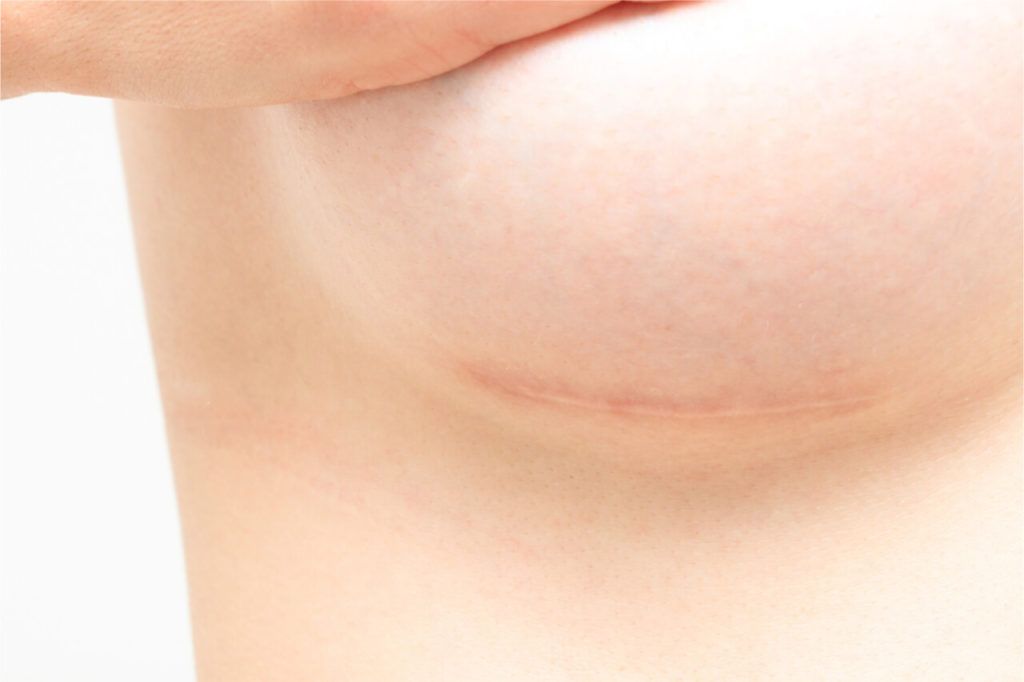A frequent concerns women have prior to having breast augmentation is “Will you see scarring and if it is, what will it appear like?” Since it involves surgery the possibility of scarring is an element that happens during surgery. However, there are many options to minimize the appearance of breast augmentation scars and make them less obvious.
The responses to the most frequently asked questions regarding scarring caused by breast augmentation can aid in gaining confidence that the final results will appear natural and smooth.
Where the breast augmentation scars be found?
The position of the breast augmentation scars from your breast implants can be identified by the location of the incisions your plastic surgeon makes to position implants in that breast pouch. The most popular technique for incisions is known as the inframammary cut. The technique involves making two incisions that follow the natural curve beneath your breasts. Therefore, scarring is easily concealed under the bikini’s bottom.
The periareolar incision makes an incision semi-circular that follows the lower portion of your areolas. This could conceal scarring even more. Also, there is a transaxial cut, which is placed within your underarms and will result in no marks on the breasts. The procedure however requires more skill and precision in surgery and may be less precise when it comes to the location of the implants.
What will my breast augmentation scars appear like?
In the course of your breast enhancement recovery process, you must keep in mind that scars may be a long time to heal completely and grow. It’s possible that your scars appear to get worse before they appear better. The majority of breast augmentation scars appear pink or red and slightly raised as they get better and less noticeable in time. The speed at which your scars heal will be affected by factors like age as well as genes, your complexion, and exposure to the sun.
How can I reduce the appearance of scars after surgery?
The positive side is that there are a lot of ways you can take before and after surgery to speed up healing and reduce the appearance of the marks. This includes:
- You should avoid smoking for several weeks prior to and following the procedure
- Be sure to stay out of the sun and applying sunscreen
- Drinking nutritious meals and plenty of fluids during recuperation
- In accordance with your plastic surgeon’s guidelines for exercise following the breast augmentation
What is my options for treating my breast scar?
If you end up with larger-than-life scars or wish to minimize their appearance further, there are several ways to treat scars you can test. Make sure to talk with your plastic surgeon prior to applying any of these methods since you’ll need to ensure that your cuts have been completely healed prior to trying any of them:
When handled by an experienced plastic surgeon, the breast augmentation scars are extremely easily concealed and will recover nicely over time, another reason why it’s so crucial to select a reputable plastic surgeon to perform your procedure.
Scar massage
A scar massage is precisely what the name suggests. A scar massage is a gentle massage of the marks with circular motions both horizontally as well as vertically. This can reduce pain and inflammation, as well as increase collagen fibers that help flatten the scars.
Based on the recommendations made in the Moffitt Cancer Center it is recommended to begin massaging your scars for two weeks after the surgery. The massage can be repeated several times per day, usually for 10 minutes each time. After the scar has gotten smaller and disappears, you will not need to massage it all the time.
Scar gels or silicone sheets
If you are looking for an OTC solution, you could think about the use of scar gels or silicone sheets.
Silicone sheets are bandages made of silicone that aid in hydrating recent cuts. The theory is that this can help stop the drying process and excessive scar tissue. These bandages are used to help reduce itching and discomfort immediately following surgery. They can be used until your incisions heal.
These gels are on contrary contain silicone. They are OTC products that do not have bandages in them. They are used after the healing of the incisions, and for a period of time afterward. The primary goal is to decrease the size and appearance of scars.
Embrace dressings
Similar to silicone sheets, embrace dressings contain silicone. They are put on right after the surgeon has made the incisions. The embrace dressing helps to pull those edges around the incision to prevent the formation of scar tissue. The dressing is worn daily for up to 12 months.
Fractionated lasers
After your incision is completely healed, you can look into professional treatment to treat any scarring that has been caused by the incision. Laser therapy can penetrate the upper (epidermis) and the inner (dermis) areas of your skin, reducing the variation in pigmentation.
But, you’ll require multiple treatments in order to get the desired results. To achieve the best outcomes, your scar might be treated once every two months throughout one year or more.
Sunscreen
Even if the incisions aren’t exposed directly, UV rays of the sun’s (UV) radiations could penetrate your bikini bottom or shirt. The use of sunscreen can prevent marks from darkening under the sun.
It is possible to start applying sunscreen once the wounds heal completely. In the meantime, you should limit the sun’s exposure.
To get the best results, apply sunscreen throughout the day and apply it whenever you need to. Apply an SPF of at least 30 SPF. Make sure you choose “broad-spectrum” sunblock. These sunscreens can shield you from the strongest UV radiation.


Comments are closed.